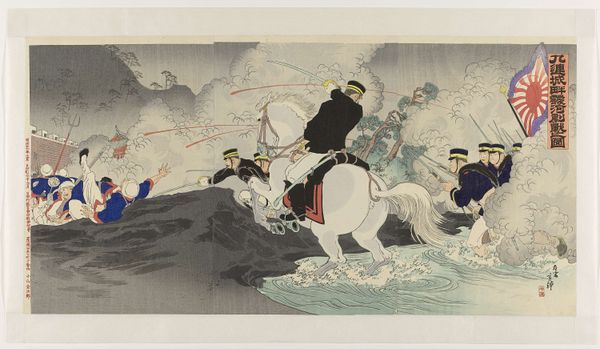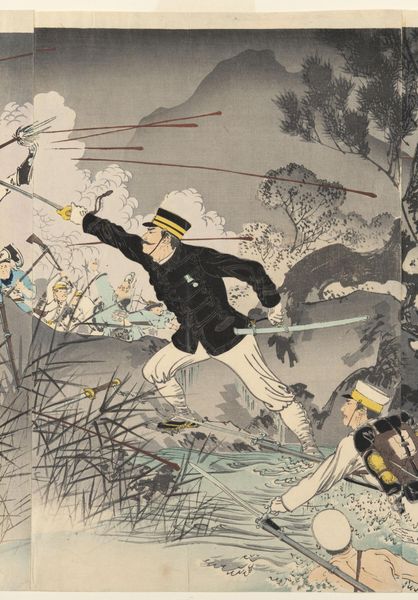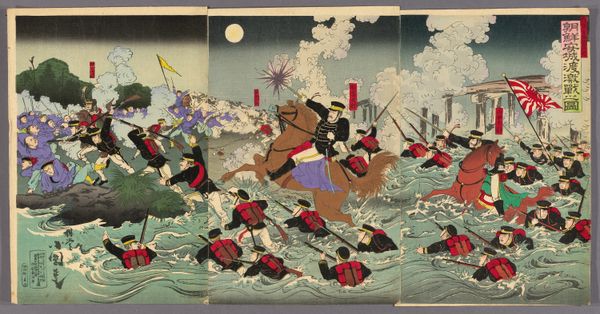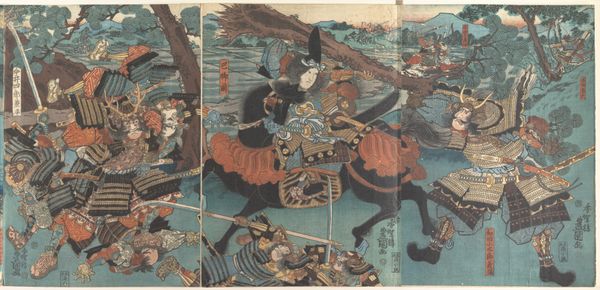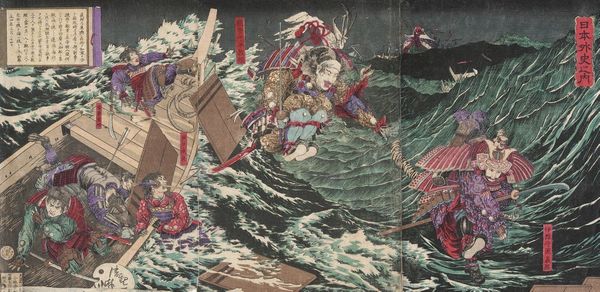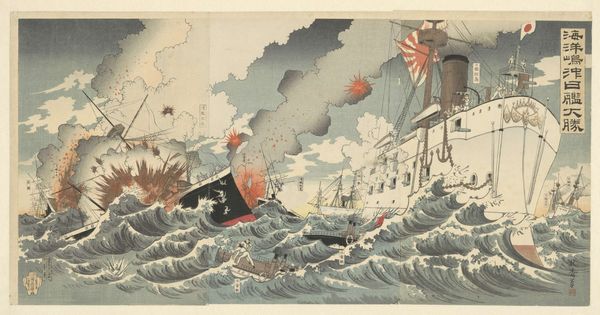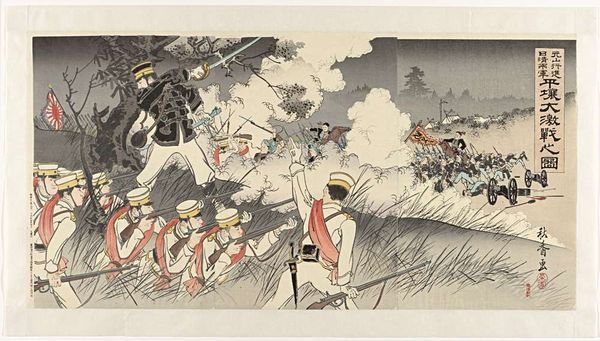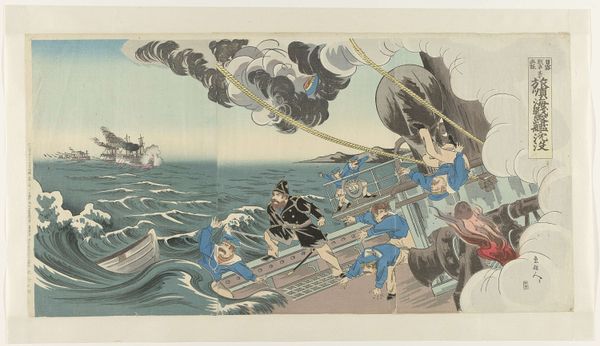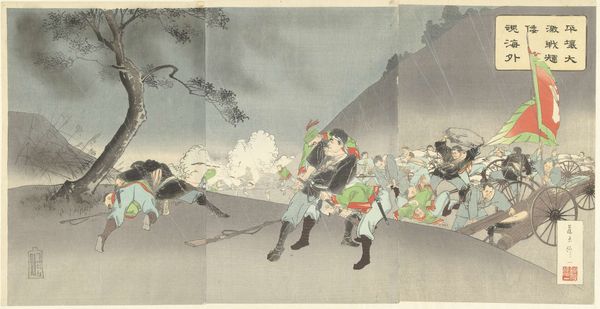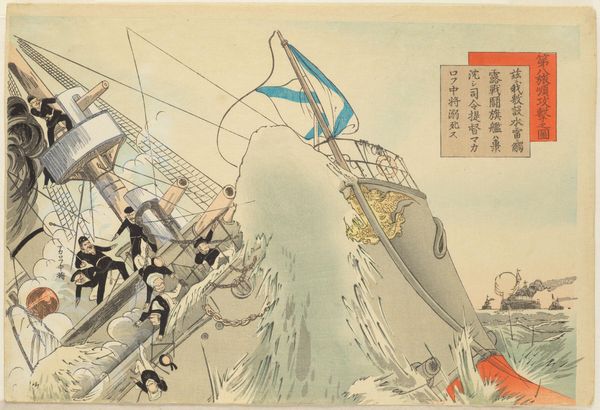
Felle gevechten op de drijvende brug in Kiuliencheng tijdens de Sino-Japanse oorlog Possibly 1894
0:00
0:00
Dimensions: height 359 mm, width 713 mm
Copyright: Rijks Museum: Open Domain
Kobayashi Toshimitsu’s woodblock print depicts fierce fighting on a floating bridge. The scene is dramatically split: on the right, Japanese soldiers advance, while on the left, Chinese soldiers are thrown into the water amidst explosions. The composition emphasizes movement and chaos. Notice how Toshimitsu uses diagonals to convey the dynamism of battle. The bridge itself, rendered with precise, parallel lines, acts as a stage for the violent clash. Saturated colors highlight the intensity, with the deep blues of the water contrasting against the red accents of the soldiers’ uniforms. This print, like many of its time, served as propaganda, glorifying military exploits. However, beyond its propagandistic function, the artwork uses formal elements to explore themes of power, conflict, and national identity. How does the artist invite the viewer to interpret the significance of the battle? Toshimitsu's strategic use of line and color creates an enduring image of war, inviting ongoing interpretation.
Comments
No comments
Be the first to comment and join the conversation on the ultimate creative platform.

